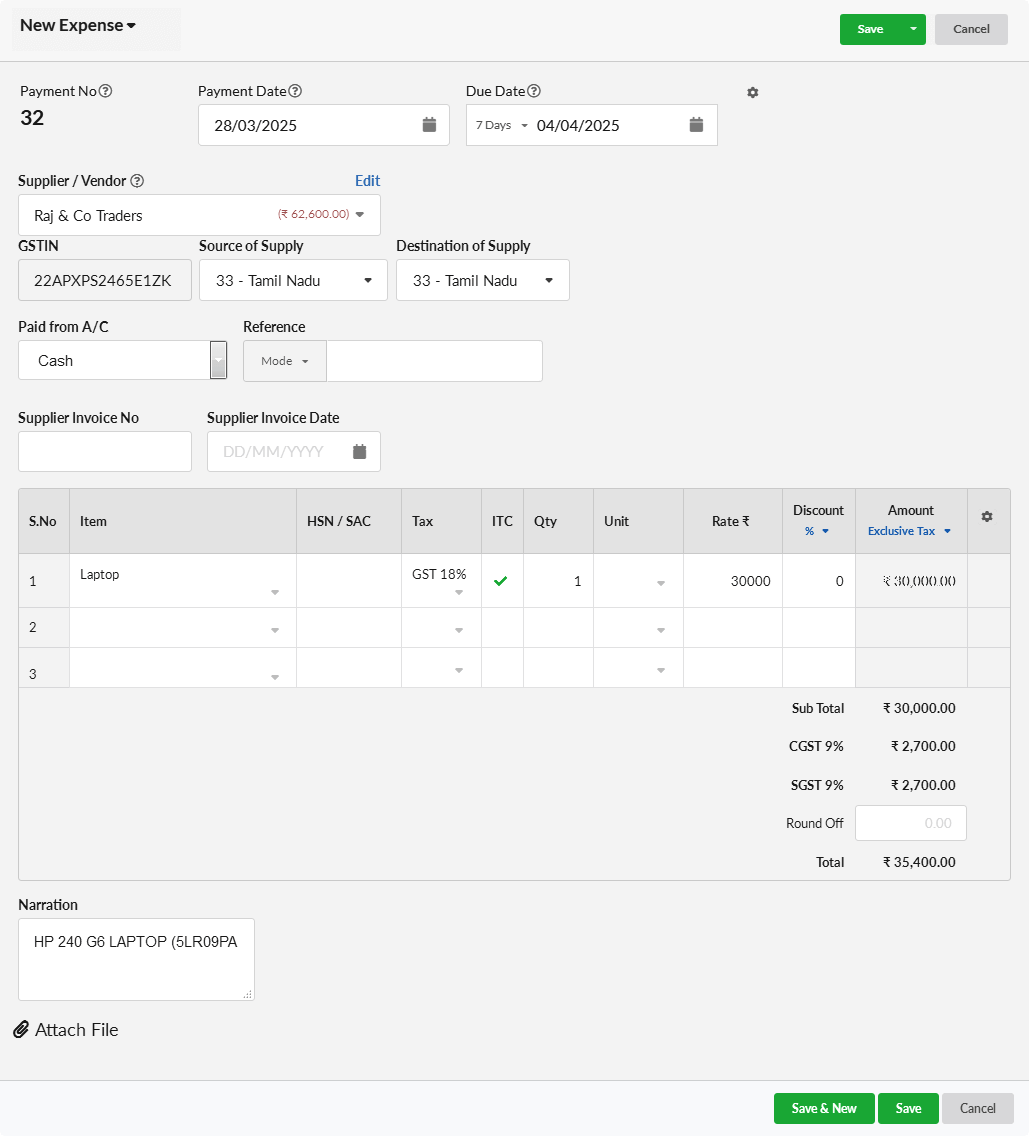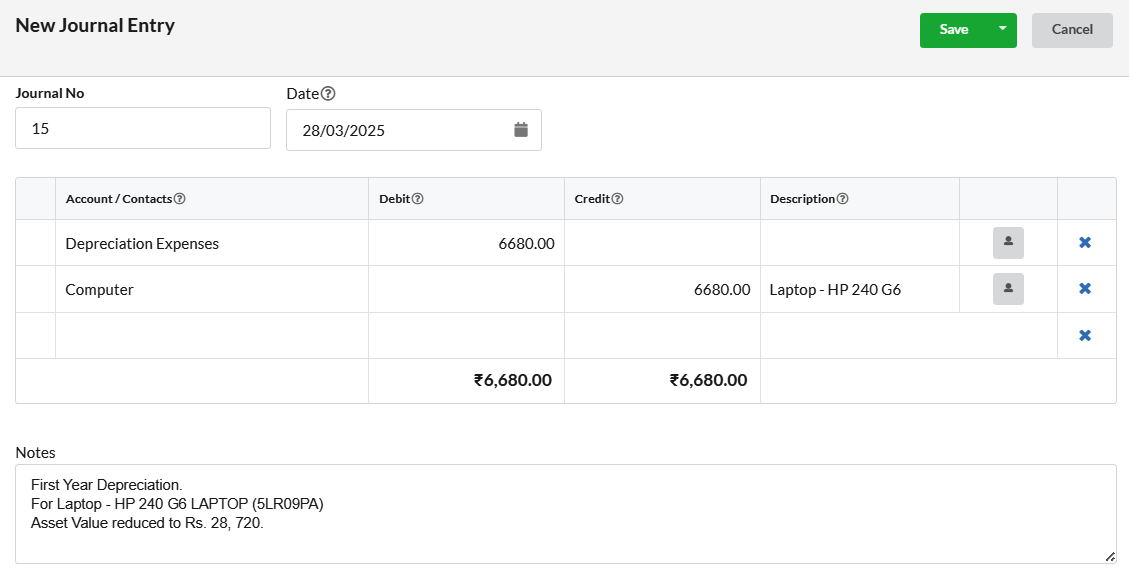Reduction in value of tangible fixed assets due to normal usage, wear and tear, new technology or unfavorable market conditions is called Depreciation.
In accounting terms, depreciation is defined as the reduction of recorded cost of a fixed asset systematically until the value of the asset becomes zero or negligible.
Page Contents
How to record depreciation in Output Books?
Scenario 1 : If a laptop is purchased for a company with a cost of Rs.30000 and the expected lifetime of the laptop is 5 years, the business might depreciate the asset under depreciation expense every year for a period of 5 years.
Steps to follow:
- Record the purchase of the Laptop.
- Calculate the depreciation.
- Post a manual journal every year to charge the depreciation on the asset and reduce its value.
1. Record the purchase
- Go to Purchase > Expense > New Expense.
- Select any Supplier/Vendor from the drop-down.
- Enter Laptop in Item and provide the amount of the laptop.
- Enter Narration for the expense.
- Click Save.
2. Calculate the depreciation
Annual Depreciation expense = (Initial cost – Residual Value) / Useful life of the asset.
| Initial Cost | The initial cost is the cost of acquiring the asset plus the other costs for making it operational, such as taxes, freight and installation. |
| Residual Value | Residual value is the amount you expect to receive from the disposal of the asset after its useful life. |
| Useful life of the asset | Useful life is the period of time over which the asset is expected to be used. |
In this example,
- Initial Cost = Rs.30,000 + 18% tax = 30,000 + 5,400 = Rs.35,400
- Residual value for laptop is Rs.2000.
- Useful life of the asset is 5 years.
- Depreciation = (35,400 – 2000) / 5 = Rs. 6680
3. Journal Entry
In order to post a journal entry for the depreciation in Output Books,
- Navigate through Accounting > Journal Entry on the left side panel.
- Select the Depreciation Expense account from the drop-down.
- Enter the depreciation amount[here Rs.6680] in the Debit column.
- In the next line, select Computer from the drop-down.
- Enter the same amount in the Credit column.
- Enter Notes for reference. For instance, here we entered as ‘First Year depreciation. For Laptop – HP 240 G6 LAPTOP (5LR09PA). Asset value reduced to Rs.28,720’.
- Click Save.
Thus, the company can take Rs.6680 as the depreciation expense at the end of every year over the next five years. This process comes under the most common accounting method, straight-line depreciation.
What to do when the asset value is fully depreciated?
A business isn’t required to get rid of an asset just because it reaches the end of its useful life. i.e., when it has been fully depreciated. If an asset is still in working order, the company is free to keep using it as long as it wants.
In accounting terms, it’s getting to use the asset for free from that point on. Of course, if the asset is still usable, it probably has some value, but that’s irrelevant from the accounting standpoint. The company can’t revalue or write up the book value of the asset.
How to dispose the asset?
At some point, the company will want to get rid of that asset. When it does, it compares the disposal cost with the book value of the asset and reports either a gain or a loss.
Say the fully depreciated laptop has a book value as the salvage value Rs.2000. If the company sells the laptop for Rs.2500, it reports as Rs.500 gain.

